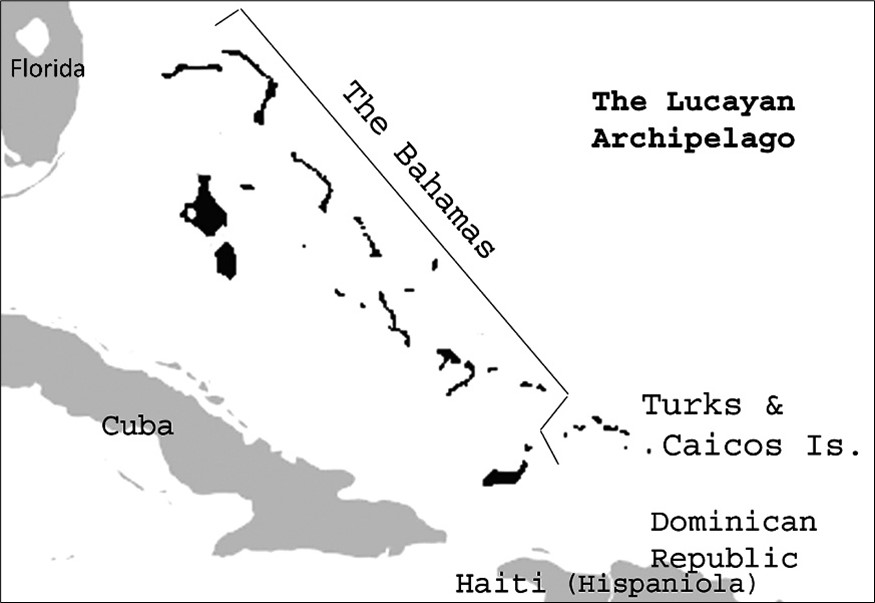The Lucayan Archipelago

The Bahamas and the Turks and Caicos Islands collectively make up the Lucayan chain of islands. Also known as the Lucayan archipelago, this chain of islands lies near the western boundary of the North Atlantic Ocean, approximately 50 miles (80 km) east of South Florida on the southeast coast of the United States of America. Though inhabited by the Lucayans, the islands were claimed by the Spanish Crown after Christopher Columbus made his first landfall in the Americas on their shores.
The islands extend over 500 miles (800 km) in a southeasterly direction from 50 miles (80 km) off the east coast of Florida to within 15 miles (24 km) of the northern coast of the Republic of Cuba and within 90 miles (144 km) of the northern coast of the island of Hispañiola (the Republic of Haiti and the Dominican Republic).
Today, the Lucayan chain is divided into two groups of islands, The Bahamas and the Turks and Caicos Islands. The Bahamas (or the Bahama chain) comprises the much larger group that runs the full length of the chain, which slants in a northwest to southeast direction. The smaller group of islands, the Turks and Caicos Islands, is located at the southeastern end of the Lucayan chain.
The Bahamas occupies more than 90 percent of the Lucayan chain’s landmass with 5,340 square miles (13,940 sq. km) of land. The Turks and Caicos Islands’ combined landmass is up to 366 square miles (948 sq. km). The Bahamas’ population in 2010 was 350,000 in number, approximately ten times the population of the Turks and Caicos Islands, which had some 35,000 people during the same year.
Following the Lucayan genocide, the Lucayan chain of islands was abandoned for over a century. The distinction between The Bahamas and the Turks and Caicos Islands came about after the islands were settled at separate times by English settlers from Bermuda. The Bahamas was reclaimed by the British in 1629, having been granted to English Attorney General Sir Robert Heath.